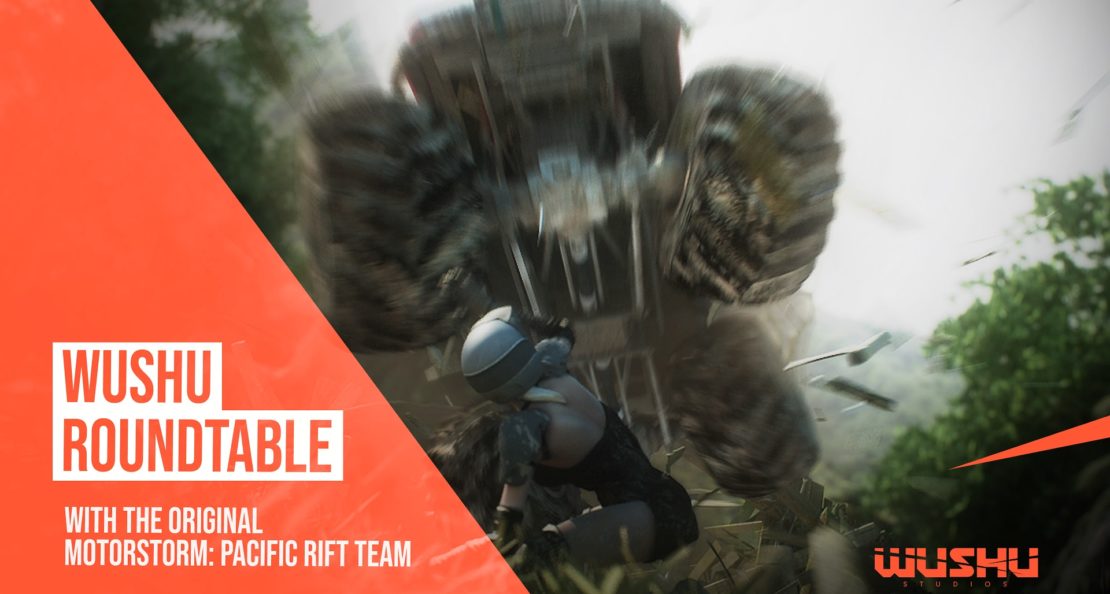Wushu Roundtable with the Original MotorStorm: Pacific Rift Team
Hey everyone!
We’re going old school, and brought a very special Wushu Roundtable with us today. As you know, many of us here at Wushu Studios hail from our days back at Evolution Studios. As today is the 13th anniversary since the launch of MotorStorm: Pacific Rift, we were able to corral a few of the original members from the team and pick their brains! We’re delighted to chat with former Game Director Nigel Kershaw, Senior Designer Mike Humphrey, and Creative Lead Stuart Trevor about all things Pacific Rift. Join us why don’t you?
First off, I have to ask all of you: 13 years is a lifetime ago, but does it feel like that much time has passed?
Mike Humphrey: It does feel like a lifetime ago. I was still early in my games career at that point and I’d really been thrown in the deep end on the first MotorStorm. We crunched hard on that game and it felt like that momentum carried us into Pacific Rift without a break, so the whole thing is a bit of a blur.
Stuart Trevor: I’d agree with Mike there. We released a launch title and a sequel in I think around three years, so it was pretty relentless – and thinking back now, definitely all a blur. I remember one had trees and the other was more brown…
Nigel Kershaw: It was a different age, where development and the attitudes to development were, in hindsight, very alien to what they are now. Crunch was a real, expected thing. Some of us burned out, but it’s what you did then to make games. Development has changed significantly in the intervening period, and we have to be careful not to look back through rose-tinted glasses!
Very good points. So to get right into it – MotorStorm, how did the concept come about in the first place? That first speck of an idea in someone’s brain.
Nigel: After doing five WRC rally games in a trot, we knew how to make fun, off-roading games, but rallying is a solitary sport – it’s just you versus the terrain, and it primarily appeals to hardcore petrol heads. We wanted something free of rules and regulations, a metric ton of opponents and with broader appeal to more folks than just rally nerds. We knew off-road racing was fun, but what did it need to convince everyone else that this was the case? The process was a collective effort with lots of false starts and weird ideas, but eventually, we settled on the MotorStorm formula – lots of diverse vehicles, lots of wrecks, spectacular scenery, a mad festival, cool tunes and chaos…
Here’s a very early design overview when it was called ‘Rip It Up’…
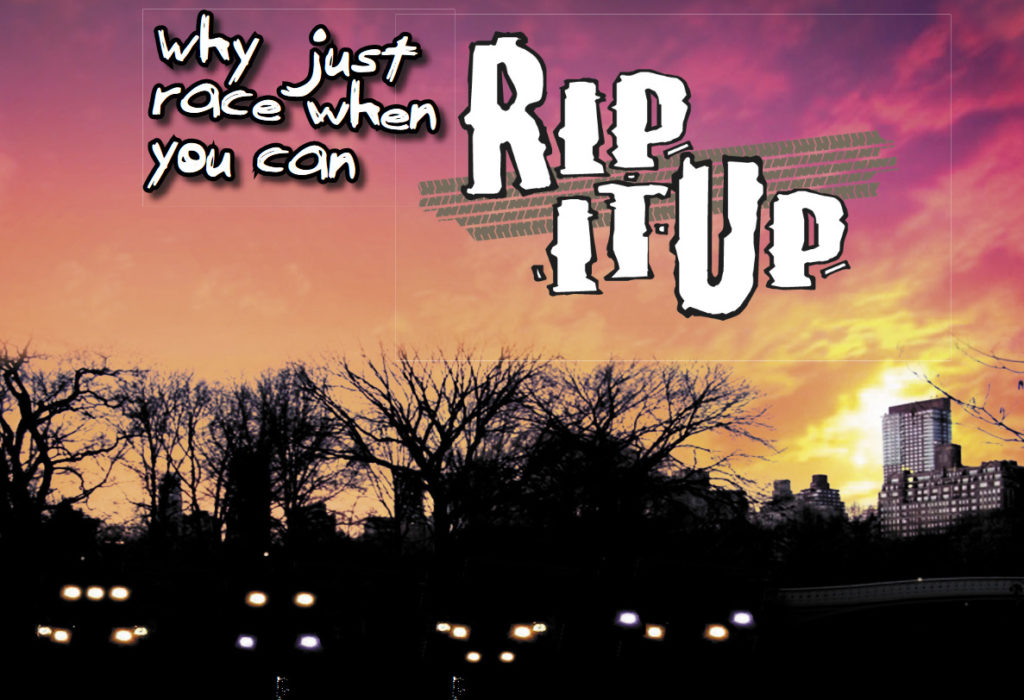
The concept then became ‘Stampede’.
 Stuart: When I joined Evo in late 2004, I went onto a small team of artists working on a project called “PlayStation Racer” or PSR. For the first few weeks, I was modeling the interior of a McLaren F1 – so pretty far removed from what became MotorStorm. I don’t think the suspension would’ve been up to Raingod Mesa.
Stuart: When I joined Evo in late 2004, I went onto a small team of artists working on a project called “PlayStation Racer” or PSR. For the first few weeks, I was modeling the interior of a McLaren F1 – so pretty far removed from what became MotorStorm. I don’t think the suspension would’ve been up to Raingod Mesa.
A few weeks after that, the seven or eight of us were all tasked with modeling an off-road vehicle each, so I guess that’s when the higher concept began to form. I’ve always been a massive VW Beetle fan so jumped at the chance to build a suped-up Baja version (based on the Trophy Bug) until copyright issues got in the way of using a Beetle shell. A last minute transformation converted it into a super aggressive Manx-based off-roader with a splash of Kübelwagen, and we ended up with the Wombat Typhoon (that somehow made it into all the trailers and all the box art). You can see a rare shot from mid-conversion below.

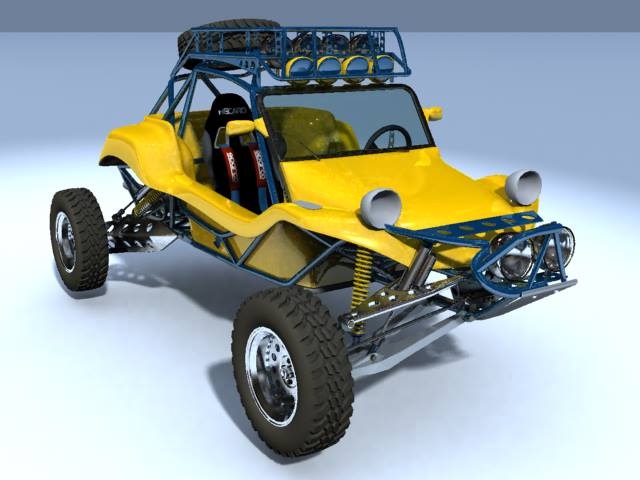 Did you all feel like you had something good in your hands during production? Something PlayStation 3 players would really be into?
Did you all feel like you had something good in your hands during production? Something PlayStation 3 players would really be into?
Nigel: We certainly had confidence in what we are doing, but the secret to good game development is being able to constantly look at what you have and ask yourself if it can be better, and if it can, how can it be better. It also takes time to develop the core technology of a game, and this needs to reach a level of maturity before you can really start seeing the gameplay shine through. There were certainly moments in the first six months where we questioned the sanity of taking a visually and technically complex MotorStorm and then making it even more complex. It probably took another six months before we could start breathing easy and realised that it was all going to work.
Mike: I think there was a lot of pressure for Pacific Rift coming off the success of the first game. But we knew when MotorStorm went out there were things with it that we weren’t happy with, and Pacific Rift gave us the chance to address those things. We’d moved the location from the deserts and mesas of Monument Valley to a volcanic island and that brought with it new opportunities – like water, vegetation and lava flows. I think we knew quite quickly that we were going to be able to smooth out all the edges from the first game and that we were onto something special.
Coming off the cusp of the critically acclaimed first game, you’re tasked with taking that framework and building an even bigger, better game through a sequel. Conceptually, did you tackle that as game director, Nigel?
Nigel: A lot got left on the cutting room floor of the first game – stuff we just didn’t have time to develop or even think about; we were up against the clock just getting something out of the door for launch . The PS3 was incredibly difficult to develop for, especially in those early days. We were lucky. This pressure made the first game tight and lean, but the fun and the DNA of the gameplay was there, and that’s what counted.
So in some ways, the framework was already there for us. Consider that Monument Valley was our proof of concept, this one was going to be the proper MotorStorm experience we wanted to deliver from the outset, uncompromised by prototype hardware and looming console launch dates!
Arcade racing in general is a huge genre with dozens of different styles, but MotorStorm is a different breed mixing designed tracks, rally racing and all out chaos into one. How does that differ from your typical racer?
Mike: In a lot of ways it was like making multiple racing games in one, because we had so many vehicle classes and multiple routes on all of the tracks. Designing a track that felt good to race in a Big Rig, but also felt great for a dirt bike or ATV was a hell of a challenge. Having those routes overlap and intertwine was where a lot of the chaos came from, especially when you consider that each vehicle reacted to surface types differently. Then, in Pacific Rift, we added water and vegetation which would affect the smaller vehicles, as well as allow the environment to heat and cool the boost mechanic. If that wasn’t enough, we threw in environmental events like huge explosions and collapsing structures, so it all felt a lot like a blockbuster movie. It was essentially controlled chaos and that’s something that’s difficult to replicate.
Nigel: I wanted to shift the paradigm of what was expected of an arcade racer. Specifically to ensure that the AI were not just there to win races against the player, but they were also there to keep the player entertained. We spent a lot of time developing systems to ensure that chaos happened around the player, and was not just left to fate.
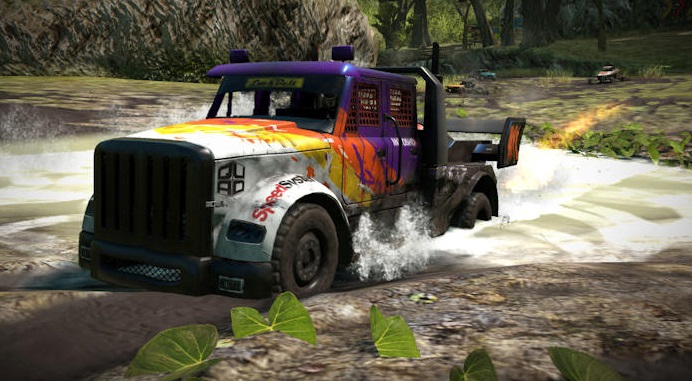
The clearest difference from the original MotorStorm was the move to a more lush island setting, complete with all kinds of interactive vegetation. You all took a lot of photo reference trips to deserts and the Grand Canyon for the first game. What sort of fun did you get up to for Pacific Rift? Fly to any volcanoes? Camped out in jungles?
Nigel: A bunch of us spent a month in Hawaii taking thousands of photos and hours of video. It sounds like a blast (and it was) but it was hard work – long days and lots of traveling through the wilderness. We learned that reference trips in actual locations really helped the quality and believability of our environments from back in our World Rally Championship days. There’s nothing like being somewhere to evoke a sense of how a track could flow through a landscape – it really makes a difference. The ‘Sugar Rush’ track, for example was inspired by us accidentally stumbling across an abandoned sugar cane processing plant on Kauai. We spent a productive few hours photographing everything before we were chased away by security guards.
Like the first MotorStorm, our goal was not to create geographically perfect representations of a real place, rather these trips inspired us to create fantastical tracks that felt real.
You were a senior designer on the project, Mike. What were some of the main design goals you had when approaching Pacific Rift compared to the first game?
Mike: One of the main things we wanted to do was refine what we felt was already strong from the first game. Things like the rider combat, which allowed bike and ATV riders to attack each other, was a little clunky in the first MotorStorm. In Pacific Rift we wanted to make it much more immediate and easier for the player. We also wanted to expand this to the other vehicles, adding in assisted ramming to really up the level of violence. Another big area for improvement was the AI behaviours. We really wanted to make the other non-player drivers feel as real as possible. In the first game, we’d intended to include “grudges”, where AI drivers would go out of their way to take the player out. That never made it in but the players still felt like it was happening, so we wanted to lean into that and make those grudges real.
The tools really helped with this. The “tools” we used on the first game were rough and ready, and we were making things up as we went. But they had matured somewhat in Pacific Rift and the code team did an amazing job refining the tools interfaces for us to make the design job much easier. This means we could iterate on things like AI behaviours much more quickly. I remember one of the tools allowing us to animated the AI vehicle movements in 2D using “drive-to” positions relative to other vehicles and the environment, and it was an actual revelation. We had to do it all in text files and sort of hope for the best in the first game.
Who came up with the idea to add monster trucks in the game?
Nigel: I think we had about 18 different vehicle classes in the early drafts of the first Motorstorm game . Many of them fell by the wayside, some (like the hovercraft) were great on paper, but not so great in execution. Others just felt too similar (two classes of ATV). The monster truck was one that just needed more development time than what we had available in the first game to get the handling model right.
 The visual feature set was also one of the most praised aspects of the game. What were some of your favourite areas to work on as lead artist, Stuart?
The visual feature set was also one of the most praised aspects of the game. What were some of your favourite areas to work on as lead artist, Stuart?
Stuart: I was one of several leads on the art team. As our roles settled down I managed to jam my fingers into quite a few pies along the way. I’m quite proud of the yellow buggy mentioned above (okay okay, that’s the first MotorStorm), but that aside I was pushing hard for the festival element to the first game (see video below) and wanted it to feel authentic. I’ve had a lot of music festival experience over the years and wanted to make use of it. I’ve seen many games do this kind of thing quite ‘tackily’. The front-end movies in MotorStorm were meant to compliment the epic-but-a-bit-detached feel of the intro movie and put you slap bang in the middle of the crowd, the music and the madness. I worked with ArkVFX to produce those and they did an amazing job.
The budget was far bigger for Pacific Rift, which increased both the number of shots and how complex we could make them. Hedonism to 11. Axis Animation were on CG duties this time around and completely batted it out of the park. What was very clever and skillful matte painting and 2.5D in the first movies, we now had the budget to make fully 3D and far more complex. Axis did a fantastic job of fleshing out the side of the game you don’t get to see too much of whilst racing. The plan was that you’d see the front end movies, play the game and your brain joins up the dots.
There were a bunch of other fun areas, like box art, trailers, VFX pre-vis (pre-visualisation), lighting, tech art…it’s all pretty fuzzy now but I did jump around a lot.
Moving on to islands, jungles and beaches must have been a little refreshing from all the deserts of the original, art wise?
Stuart: I wasn’t very involved with the environments beyond a high level. We had a fantastic world class team full of artists and level designers who did an excellent job. If it ain’t broke right? I led the creative/concept team early on in the project. I can say with absolute certainty that the concept artists were very happy to be getting some use out of their other colour crayons.
There were some interesting problems to solve with the second game. I made a suggestion quite early on to theme the environments around the four elements of earth, fire, water and air in the hope that would give some focus and contrast to the world building, VFX, lighting and maybe even the game design, and if not then get them all arranged nicely in my head. Moving from a desert environment to Hawaii, it would have been very easy to try and chuck everything into every track, but the world team did a great job of giving the tracks within each element their own feel. Air was all mad vistas and draw distance, fire was lava flows and pyroclastic particles, earth was mud deformation and destructible foliage and water was waterfalls and waves lapping up beaches.
Saying that, every MotorStorm (original) track was barren and brown, but they’re still all memorable in their own right. Props to the team.
Let’s cap it off fellas: what were your fondest memories while making MotorStorm: Pacific Rift?
Everyone: Definitely the reference trip! Flying over an active volcano in a helicopter, riding in a high powered rib-boat along the spectacular (and inaccessible by any other means) Napali coast escorted by a huge school of dolphins. [See Gallery Below & Click to Enlarge]
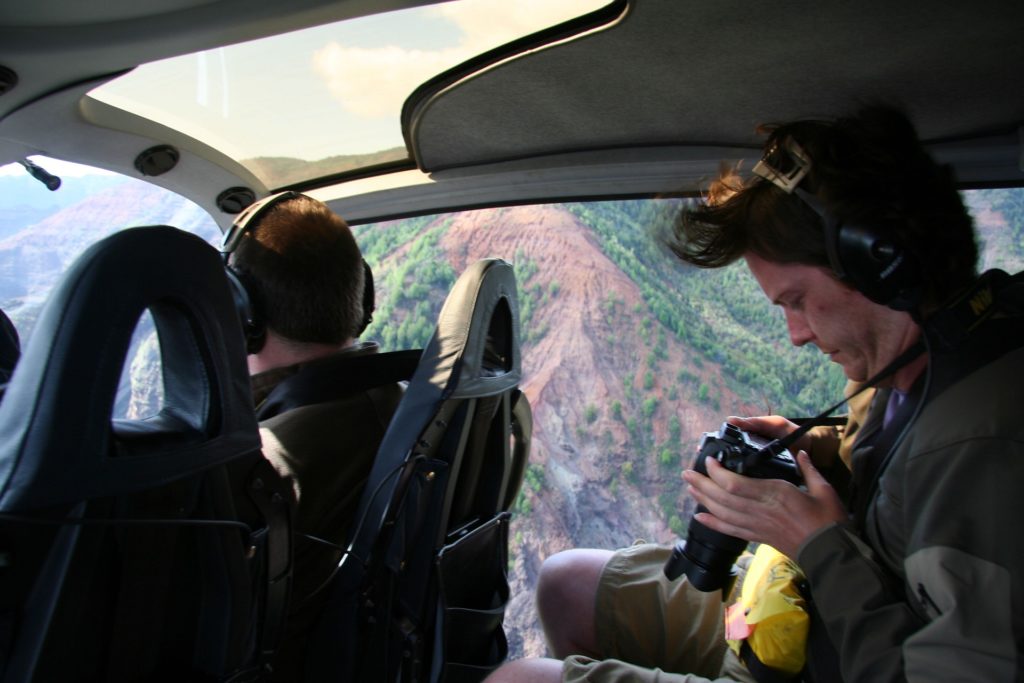

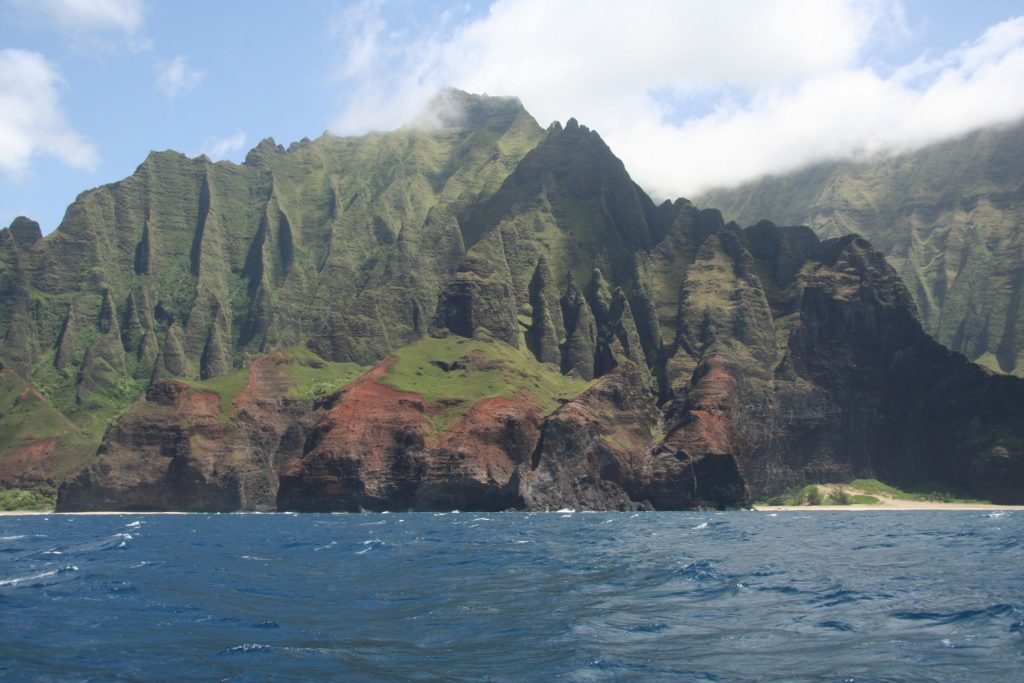
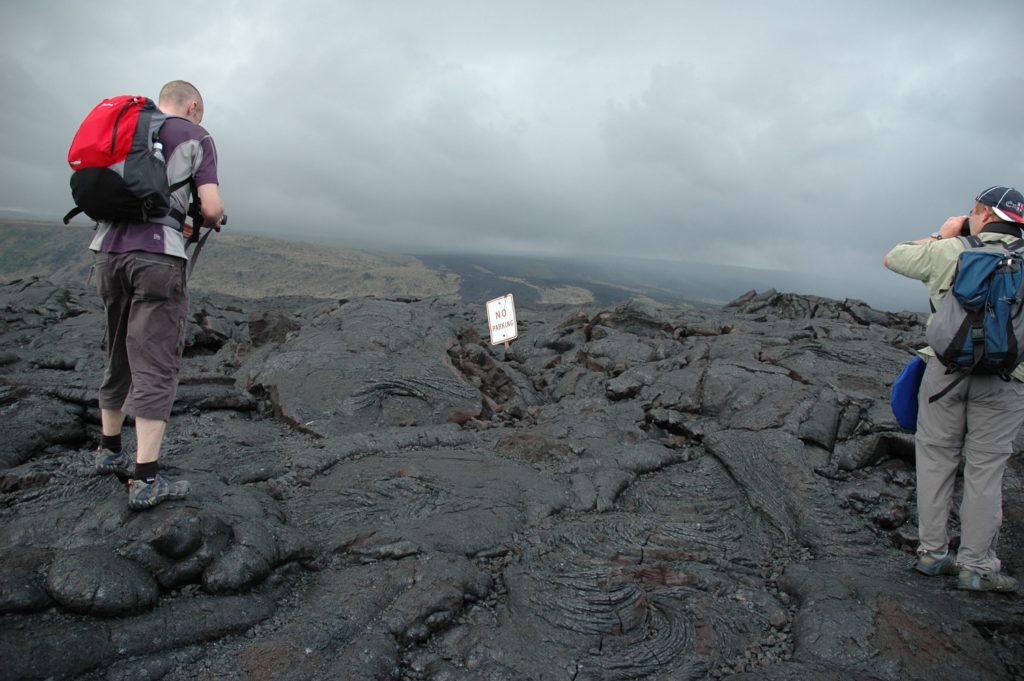
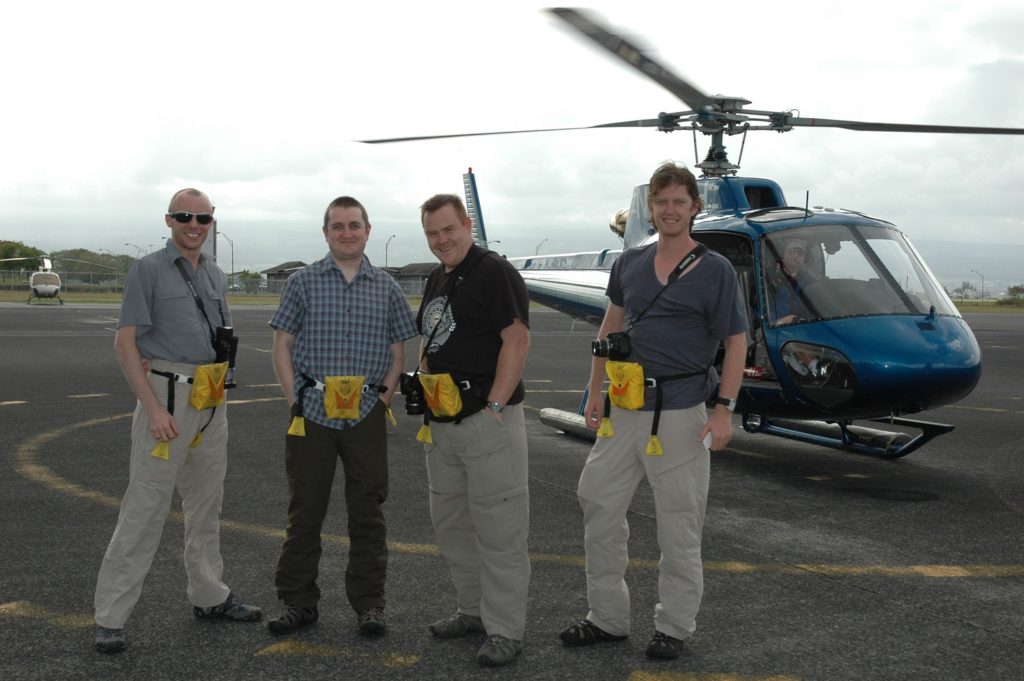
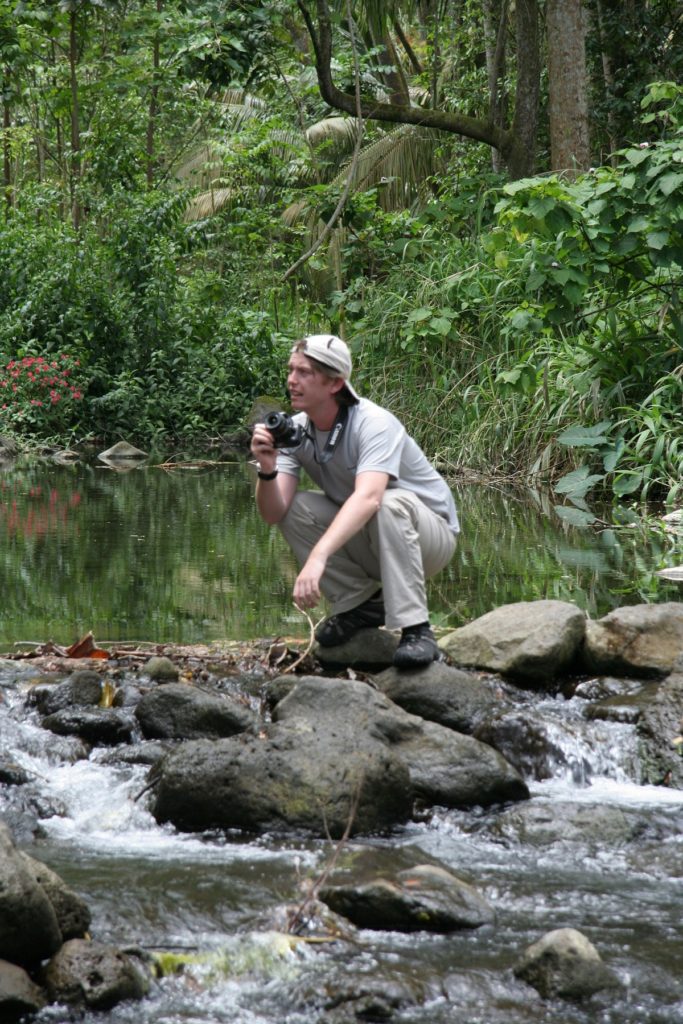
Thanks for checking out this segment of Wushu Roundtable. Be sure to keep an eye on our Twitter, Instagram and Facebook pages for more upcoming fun initiatives from us. Until next time!
Nate Najda
Communications Manager

